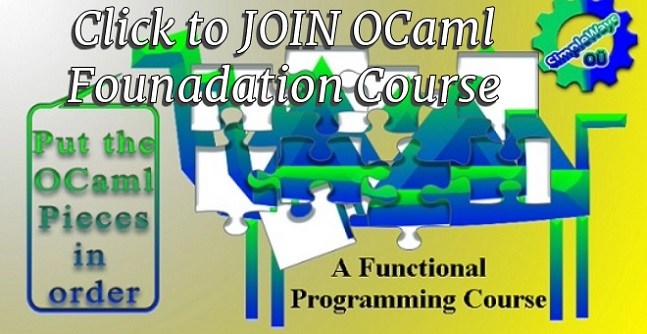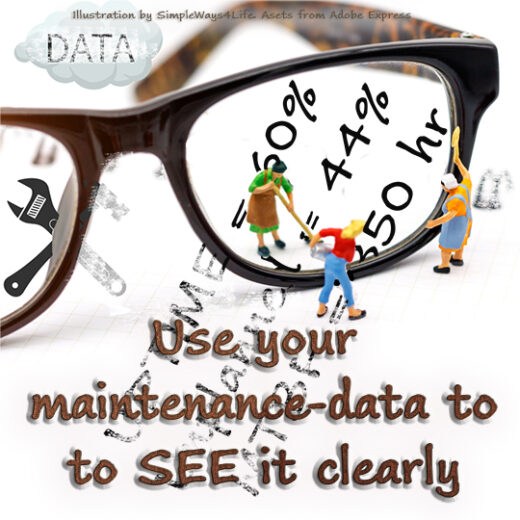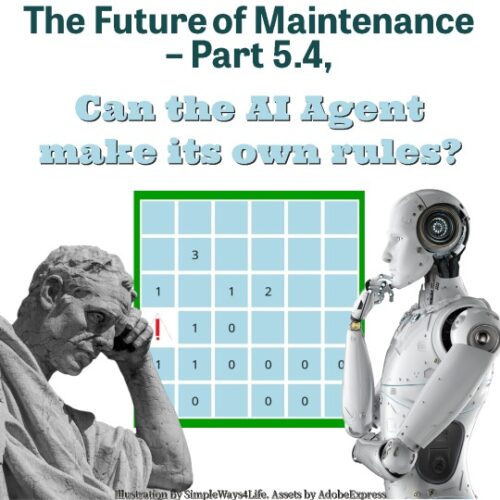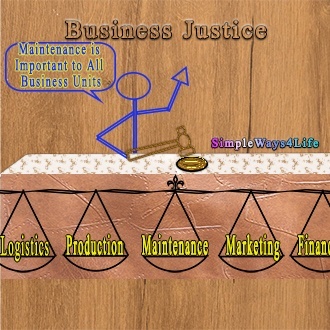As Brené Brown said: Daring Greatly is Daring to be vulnerable. Vulnerability here denotes clarity and transparency. Daring doesn’t mean that we expose ourselves to risky situations. Daring means to explicitly say what our maintenance-data denotes and, what actions we shall take based on this. But, the feedback and recommendations we may receive might not agree with what we had concluded. Being voluntarily transparent means that we are open minded enough to embrace opposing opinions and critics. Then, we think about these feedback seriously and reply decently. Being open enough to see how other mental constructions realizes our data and analysis opens the door to great opportunities of true data integrity.

CUSTOMPRICE-TO2JAN26
The preparation steps to reach maintenance-data integrity
Before putting effort to ensure maintenance-data integrity i.e. accuracy, consistency, and reliability of the information stored and managed within the maintenance system, we need to collect proper enough maintenance-data, prepare it for usage and then use this data to make informative decisions. The efforts to ensure maintenance-data integrity was covered in this article: A handbook of maintenance-data integrity
Collecting enough maintenance-data for reliability analysis involves systematic planning, data gathering, and organization. This was covered in our chat: The Steps before assurance of maintenance-data integrity – Step A

CUSTOMPRICE-TO2JAN26
Secondly, The goal is to have a comprehensive dataset that provides insights into the performance and reliability of systems, equipment, or processes. However, we can’t use the collected data directly. This collected maintenance-data needs some preparation to ensure its validity, relevance and fit for use aka quality. We covered this together in this article: Step B : Prepare Maintenance Data to be more valuable
Now. its out step C: Making use of the data. We expose it to our internal and external users to gain a wider perspective of its value. Let’s delve deeper on maintenance-data usages.
Use Maintenance-Data: Basic use within maintenance
Where do we use maintenance data? Simply, we use it to add value to the maintenance system or maintenance process. Then, what is the maintenance process? The Maintenance Process describes how to manage maintenance, prevent undesirable events, restore the items in required state, improve the items, and act on items to maintain them in a good working order (Source: What Is Maintenance Process? – Aneo Software Oy).
When we collect enough data along the maintenance process, we can use this data to understand what activities we do, what activities consumes most of maintenance resources, which equipment fails and how and how we repaired it. Next, we can take some informative decisions on how we can do things better. Doing better or more efficient maintenance means consuming less resources and providing more time for the operations.

CUSTOMPRICE-TO2JAN26

CUSTOMPRICE-TO2JAN26
Since, the maintenance process need maintenance procedures to govern the process and guide the team then we can include data collection, storage and preparation within these procedures. So, what are maintenance procedures? A maintenance procedure is a complete set of instructions on how to start, perform, complete and document the data of a maintenance task.
Use Maintenance-Data: Extended use within the organization
The valuable maintenance data after proper recording and analysis will lead to conclusions, actions and performance indicators. We can use this data to:
Collaboration Across Departments:
Foster collaboration between maintenance, operations, and other relevant departments to ensure a holistic approach to data collection. Each department has valuable insights into reliability from their respective perspectives. Sharing proper maintenance data with other departments will consolidate the correct information and knowledge about maintenance. Moreover, receiving their collected data will enhance maintenance view of the big picture.
Analysis and Reporting Tools:
Employ appropriate analysis and reporting tools to make sense of the collected data. This may involve using statistical analysis software, reliability software, or custom-built tools tailored to your specific needs. Fortunately, You can find a wealth of Reliability and maintenance analysis easy tools tin these chats:
- Data Visualization – 1- Classical data tools as Pareto charts
- Data Visualization -2- To maintain Reliability use Run Charts
- How to build maintenance around Data Visualization? -3
By following these steps, you can systematically collect enough data for reliability analysis, enabling you to make informed decisions, improve maintenance strategies, and enhance overall system performance.
while a CMMS is not absolutely necessary for reliability data collection, it is a valuable tool that enhances the efficiency, accuracy, and analytical capabilities of the process. The decision to implement a CMMS should be based on the specific needs, scale, and objectives of the organization.

CUSTOMPRICE-TO2JAN26
Th progress from A) Data Collection to B) Data Preparation and finally C) Data usage is in the same context of evolving from data to information and finally knowledge.
data, information, and knowledge
The terms “information,” “data,” and “knowledge” are related but represent different levels of understanding and processing. Here are their definitions and the distinctions between them:
1. Data:
- Definition: Data refers to raw, unorganized facts and figures. It represents discrete and objective pieces of information without context or interpretation.
- Characteristics:
- Objective: Data is objective and impartial, lacking inherent meaning.
- Neutral: Data does not convey any specific understanding or interpretation.
- Unprocessed: It is in its raw form and requires processing to become meaningful.
Example: A series of numbers (e.g., 45, 78, 92) or a list of names and ages without context.

CUSTOMPRICE-TO2JAN26
2. Information:
- Definition: Information is data that has been processed, organized, and given context, making it meaningful and useful.
- Characteristics:
- Contextual: Information provides context and relevance to data.
- Processed: It results from the analysis, categorization, or interpretation of data.
- Communicable: Information is typically communicated in a format that is understandable to the recipient.
Example: From the data “45, 78, 92,” information could be derived by organizing it into a table or chart, making it easier to understand and interpret.
3. Knowledge:
- Definition: Knowledge is a deeper level of understanding that goes beyond information. It involves the synthesis and application of information to derive insights, solve problems, and make decisions.
- Characteristics:
- Applied: Knowledge is applied in practical situations.
- Synthesized: It involves combining information from various sources to form a holistic understanding.
- Dynamic: Knowledge is continually evolving and adapting.

CUSTOMPRICE-TO2JAN26

CUSTOMPRICE-TO2JAN26
Example: Using the information about the numbers 45, 78, and 92, knowledge could be gained by recognizing a pattern or trend, such as an increasing sequence.
Summary of Differences:
- Data is raw and unprocessed facts.
- Information is processed and organized data with context.
- Knowledge is the application of information, representing a deeper level of understanding and the ability to use that understanding effectively.
In practical terms, this hierarchy often illustrates a progression in the data-to-information-to-knowledge continuum. Data is the foundation, information builds upon it with context, and knowledge results from the application and synthesis of information. Same as we progress from data collection to data preparation and, finally using the data to produce value to the organization.
In Conclusion,
Maintenance-data is foundational to effective maintenance practices. It empowers organizations to move from reactive to proactive maintenance strategies, optimize resource allocation, and improve overall asset reliability. By leveraging data, maintenance teams can make informed decisions that positively impact equipment performance, operational efficiency, and the bottom line.
If you feel you need help with any of these ideas we discussed, request a Management Consultancy or Coaching Services From our Store










